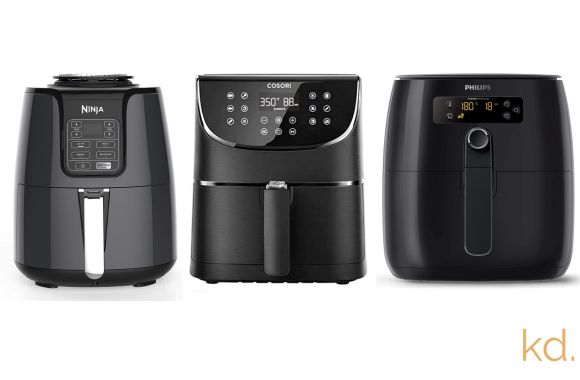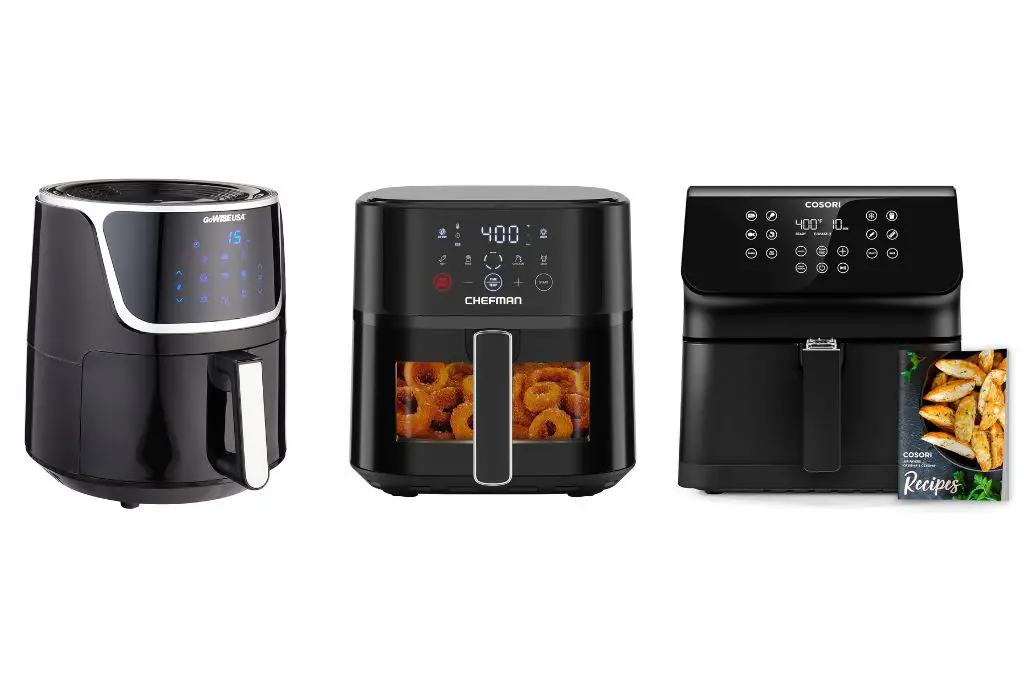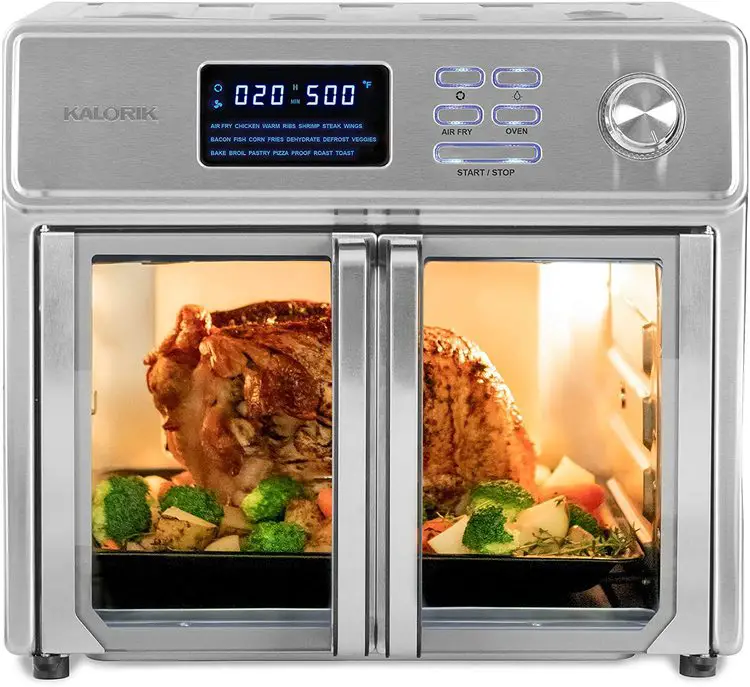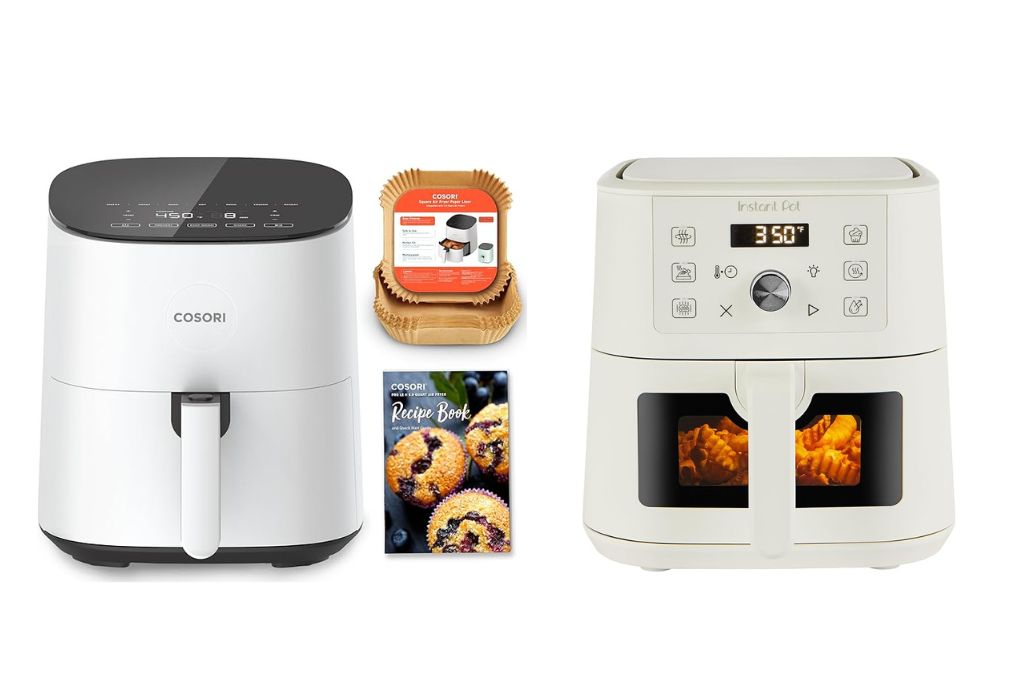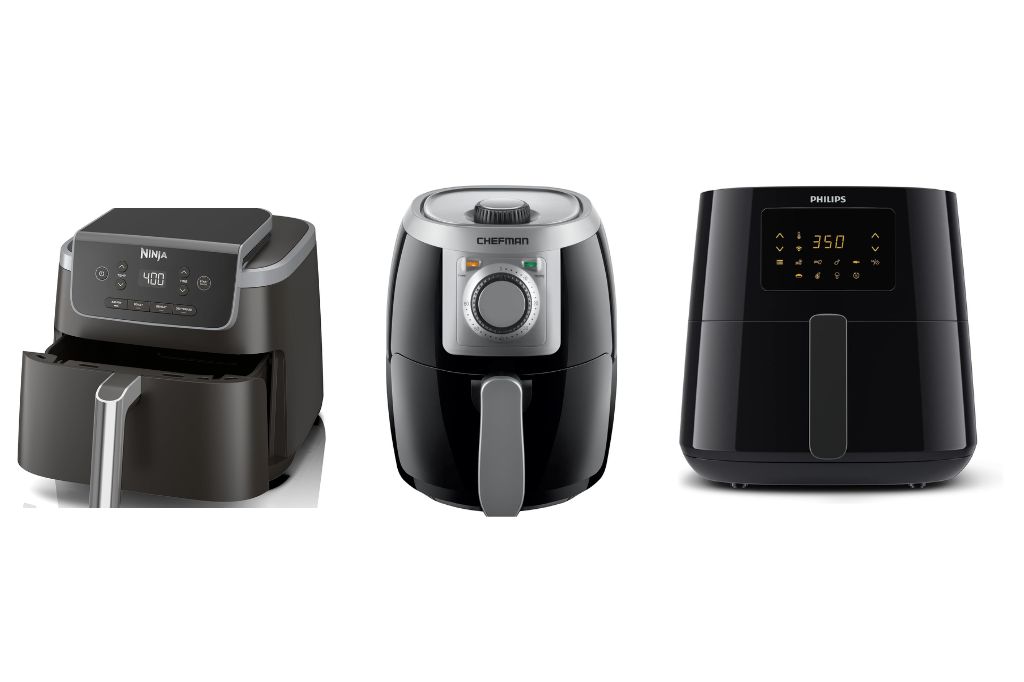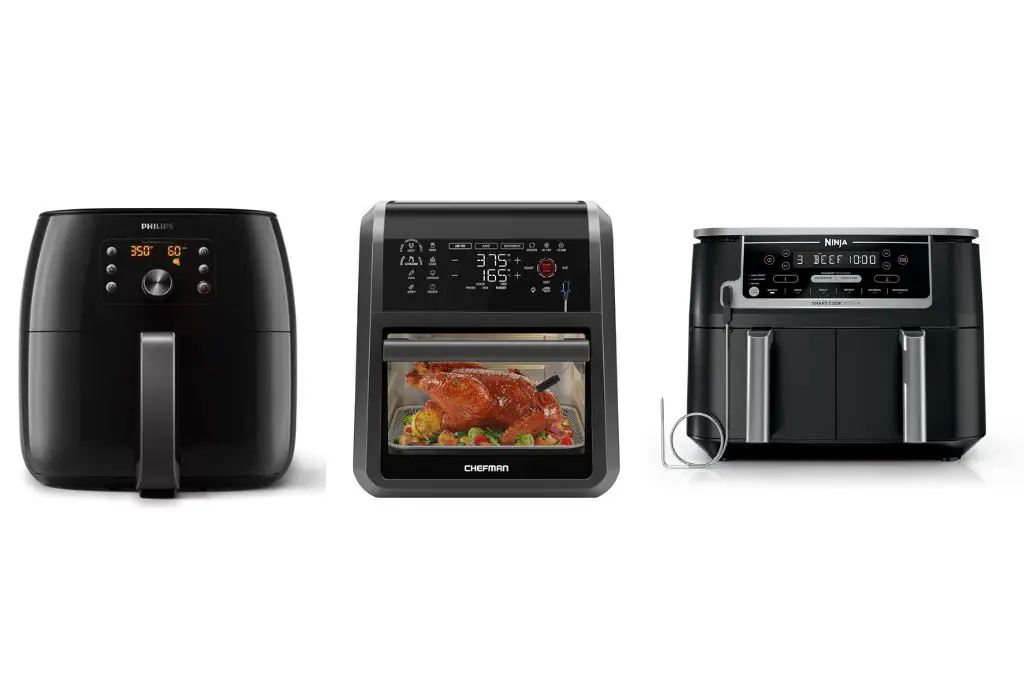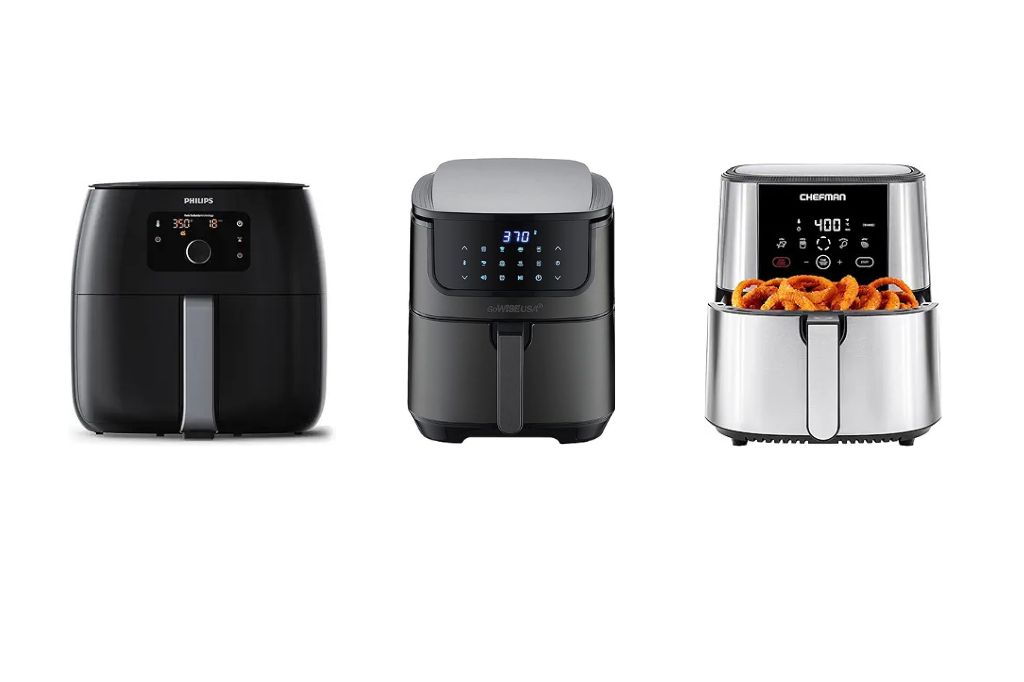Your air fryer has been your kitchen’s MVP for months – cranking out crispy fries, perfectly roasted vegetables, and those irresistible chicken wings. But suddenly, it’s acting up, leaving you staring at a cold, uncooperative appliance wondering what went wrong. Don’t panic! Most air fryer problems are surprisingly easy to fix with a little know-how and patience.
Whether your air fryer won’t turn on, isn’t heating properly, or is making strange noises, this comprehensive guide will walk you through the most common issues and their solutions.
By the end of this post, you’ll be equipped with the knowledge to diagnose and fix most air fryer problems yourself, saving both time and money on unnecessary repairs or replacements.
Understanding Your Air Fryer’s Basic Operation
Before diving into troubleshooting, it’s helpful to understand how your air fryer works. These countertop convection ovens use rapid air circulation technology to cook food with little to no oil. A heating element warms the air while a powerful fan circulates it around your food at high speed, creating that coveted crispy exterior we all love.
The main components include the heating element, circulation fan, control panel, cooking basket, and various safety mechanisms. When any of these parts malfunction, your air fryer might stop working properly. The good news? Most issues stem from simple problems that don’t require professional repair.
Air Fryer Won’t Turn On
Power Supply Issues
The most frustrating scenario is when your air fryer simply won’t turn on. Before assuming the worst, let’s check the basics. First, ensure your air fryer is properly plugged into a working outlet. This might sound obvious, but loose connections or tripped circuit breakers are more common culprits than you’d think.
Try plugging another device into the same outlet to verify it’s working. If the outlet is fine, examine the power cord for any visible damage like fraying, kinks, or burn marks. A damaged cord is a safety hazard and typically requires replacement of the entire unit, as most manufacturers don’t sell replacement cords separately.
Door and Basket Alignment
Air fryers have built-in safety features that prevent operation when the basket or drawer isn’t properly inserted. Even if everything looks correctly positioned, try removing and reinserting the basket or drawer, ensuring it clicks securely into place. Some models are particularly finicky about this alignment.
Check for any food debris or residue around the basket’s connection points. Sometimes, accumulated grease or food particles can prevent proper contact with the safety sensors. A thorough cleaning might be all that’s needed to get your air fryer working again.
Control Panel Problems
If your air fryer has power but the control panel isn’t responding, the issue might be with the touchpad or buttons. Try cleaning the control panel with a slightly damp cloth – sometimes sticky residue from cooking can interfere with touch sensitivity. For models with physical buttons, ensure they’re not stuck or clogged with debris.
Some air fryers have a “sleep mode” or auto-shutoff feature that might make them appear non-responsive. Try pressing and holding the power button for several seconds, or consult your manual for the specific wake-up procedure for your model.
Heating Problems: When Your Air Fryer Runs Cold
Inconsistent or No Heat
When your air fryer powers on but doesn’t heat up, the problem often lies with the heating element or temperature sensors. Start by checking if the heating element is visible and appears intact. In most models, you can see the heating element at the top of the cooking chamber – it should look like a metal coil or rod.
If the element appears damaged, warped, or has visible breaks, it needs replacement. Unfortunately, heating element replacement often isn’t cost-effective for most home cooks, and many manufacturers don’t offer this service for consumer models.
Temperature Calibration Issues
Sometimes air fryers lose their temperature calibration, leading to inconsistent cooking results. If your food is consistently undercooked or overcooked despite following recipes and timing guidelines, your air fryer might be running hotter or cooler than indicated.
You can test this using an oven thermometer placed inside the cooking chamber. Set your air fryer to 350°F and let it preheat for 5 minutes, then check the thermometer reading. If there’s a significant difference (more than 25°F), your air fryer may need professional calibration or replacement.
Blocked Air Circulation
Air fryers rely on proper air circulation to function effectively. If your unit is heating but not cooking food properly, check for obstructions in the air vents. Food debris, grease buildup, or even packaging materials can block critical airflow paths.
Remove the basket and carefully inspect the interior for any blockages. Clean all visible debris and ensure the fan can spin freely. Sometimes, a simple deep cleaning is all that’s needed to restore proper heating performance.
Strange Noises and Unusual Sounds
Fan Motor Issues
Air fryers naturally make some noise during operation – the circulation fan needs to work hard to move air efficiently. However, unusual sounds like grinding, rattling, or high-pitched squealing often indicate problems with the fan motor or its bearings.
If the noise is coming from the fan area, try gently spinning the fan (with the unit unplugged) to see if it moves freely. Any resistance, grinding sensation, or visible wobbling suggests the motor assembly needs attention. While some models allow fan replacement, others require complete unit replacement when the motor fails.
Loose Components
Rattling or vibrating sounds might indicate loose internal components. Check that the cooking basket is properly seated and that all removable parts are correctly installed. Sometimes, the heating element can become loose from its mounting, causing unusual noises during operation.
Inspect the exterior of your air fryer for any loose screws or panels. Tighten any obvious loose components, but avoid disassembling the unit beyond removing the basket and drip tray – internal repairs should be left to professionals.
Cleaning and Maintenance Solutions
Deep Cleaning Procedures
Many air fryer problems stem from inadequate cleaning and maintenance. Built-up grease and food residue can interfere with sensors, block air vents, and cause overheating. Regular deep cleaning prevents most of these issues.
Start by unplugging your air fryer and allowing it to cool completely. Remove all removable parts – basket, drip tray, and any accessories. Wash these components in warm, soapy water or place them in the dishwasher if they’re dishwasher-safe.
For the main unit, use a damp cloth to wipe down the interior, paying special attention to the heating element area and air vents. Avoid getting water on electrical components or using abrasive cleaners that might damage surfaces.
Regular Maintenance Schedule
Establishing a regular maintenance routine can prevent many common air fryer problems. After each use, wipe down the interior and wash removable parts. Weekly, perform a more thorough cleaning of the entire unit, including the exterior and control panel.
Monthly, check the power cord for damage and inspect the heating element for signs of wear or food buildup. This proactive approach helps identify potential issues before they become major problems.
Digital Display and Control Issues
Error Codes and Messages
Modern air fryers often display error codes when something goes wrong. These codes can seem cryptic, but they’re actually helpful diagnostic tools. Common error codes include temperature sensor failures, door alignment issues, or overheating protection activation.
Consult your user manual for specific error code meanings, as they vary between manufacturers. Most error codes have simple solutions like letting the unit cool down, checking door alignment, or cleaning specific components.
Button Responsiveness Problems
If your air fryer’s buttons aren’t responding consistently, the issue might be with the control board or button contacts. Try cleaning around the buttons with a slightly damp cloth, ensuring no moisture gets inside the unit.
For touchscreen models, check for any protective films or stickers that might interfere with touch sensitivity. Sometimes, accumulated cooking residue can create an insulating layer that affects touch responsiveness.
Safety Features and Overheating Protection
Understanding Safety Shutoffs
Air fryers include several safety features designed to prevent overheating and potential fire hazards. If your air fryer keeps shutting off during operation, it might be triggering these safety mechanisms rather than malfunctioning.
Overheating protection activates when internal temperatures exceed safe limits, often due to blocked vents, overcrowded baskets, or insufficient clearance around the unit. Ensure your air fryer has at least 5 inches of clearance on all sides and that vents aren’t blocked.
Resetting Safety Features
Many safety shutoffs can be reset by unplugging the unit for 15-30 minutes, allowing internal components to cool down. After this cooling period, plug the unit back in and try normal operation. If the safety shutoff continues to activate, there might be an underlying issue requiring professional attention.
When to Call for Professional Help
Warranty Considerations
Before attempting any repairs beyond basic cleaning and maintenance, check your air fryer’s warranty status. Most manufacturers offer one to three-year warranties covering defects and malfunctions. Attempting DIY repairs might void your warranty, so contact the manufacturer first if your unit is still covered.
Keep your purchase receipt and warranty information easily accessible. Many manufacturers now offer online warranty registration and support, making it easier to get help when needed.
Electrical Safety Concerns
Never attempt to repair electrical components yourself. If you suspect problems with the heating element, control board, or any internal wiring, contact a qualified appliance repair technician or the manufacturer’s service department.
Signs that require professional attention include burning smells, visible sparks, frequent electrical tripping, or any evidence of electrical damage. These issues pose serious safety risks and should never be ignored or attempted as DIY fixes.
Prevention Tips for Long-Term Air Fryer Health
Proper Usage Habits
Developing good usage habits significantly extends your air fryer’s lifespan. Avoid overcrowding the basket, which forces the unit to work harder and can lead to overheating. Don’t exceed the manufacturer’s recommended cooking times or temperatures, as this can stress internal components.
Allow your air fryer to cool between batches, especially during extended cooking sessions. This prevents excessive heat buildup and reduces wear on the circulation fan and heating element.
Environmental Considerations
Place your air fryer in a well-ventilated area away from heat sources like stovetops or other appliances. Avoid placing it in enclosed spaces like cabinets during operation, as this can trap heat and trigger safety shutoffs.
Keep the area around your air fryer clean and free from grease or food particles that might create fire hazards. Regular cleaning of the surrounding area prevents contamination and makes maintenance easier.
Troubleshooting Specific Models
Popular Brand Considerations
Different air fryer brands have unique characteristics and common issues. Ninja air fryers, for example, often have problems with basket alignment sensors, while Cosori models might experience control panel sensitivity issues. Philips air fryers are known for their reliability but can develop fan motor problems over time.
Research your specific model online for common issues and solutions. Many manufacturers maintain helpful troubleshooting guides on their websites, and user forums often provide valuable insights from other owners experiencing similar problems.
Model-Specific Resources
Check the manufacturer’s website for model-specific troubleshooting guides, video tutorials, and replacement part availability. Some companies, like Ninja Kitchen and Cosori, offer comprehensive online support resources.
Final Thoughts: Getting Back to Crispy Perfection
Most air fryer problems are more manageable than they initially appear. By following systematic troubleshooting steps and maintaining proper cleaning habits, you can resolve many issues yourself and prevent future problems. Remember that prevention is always better than repair – regular maintenance and proper usage habits will keep your air fryer running smoothly for years to come.
If you’ve worked through these troubleshooting steps and your air fryer still isn’t functioning properly, don’t hesitate to contact the manufacturer’s customer service team. Most companies are helpful and may offer solutions, replacement parts, or warranty coverage you weren’t aware of.
Pro Tip: Document any issues and solutions you discover with your specific model – this information will be invaluable for future troubleshooting and can help other air fryer owners facing similar problems! 🛠️
Keep this guide handy for future reference, and remember that a little troubleshooting knowledge goes a long way in keeping your favorite kitchen appliance running at peak performance. Happy air frying!
